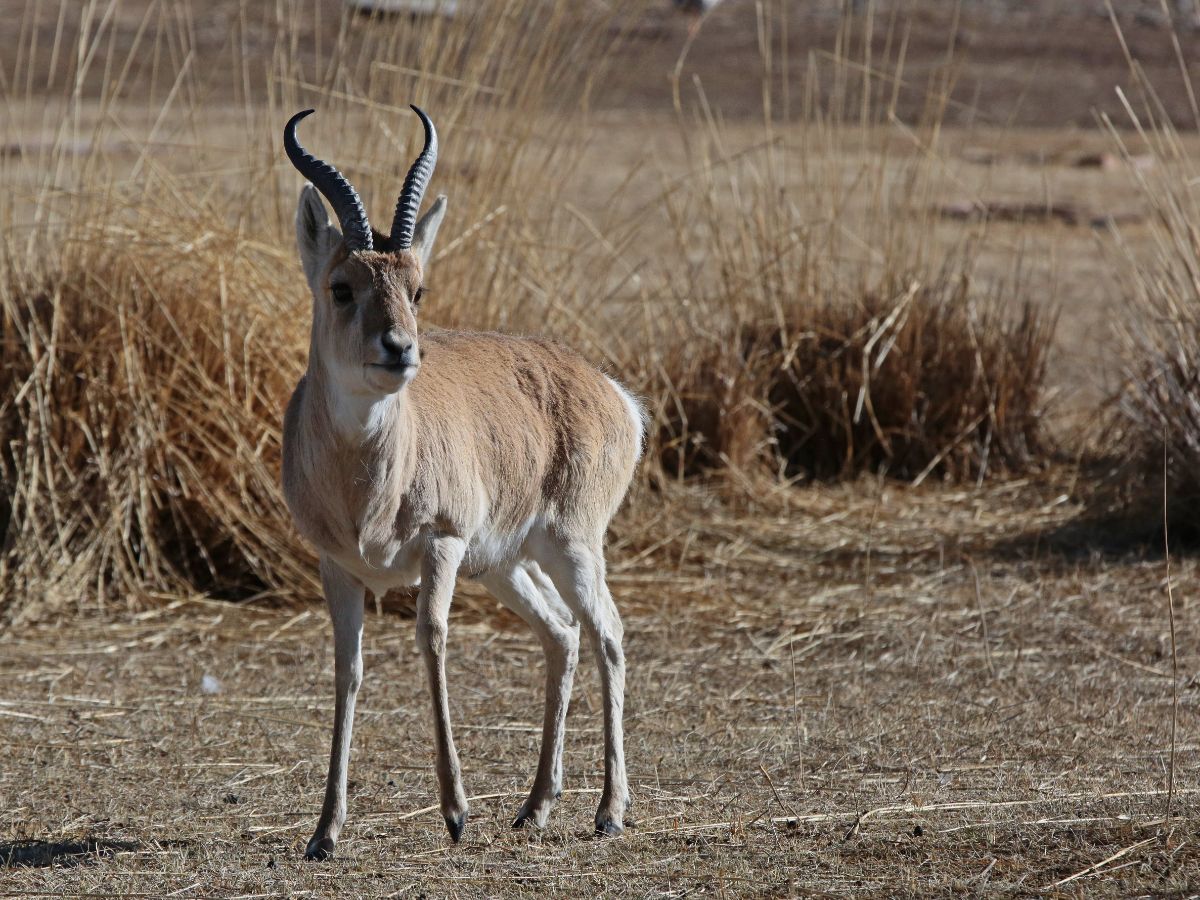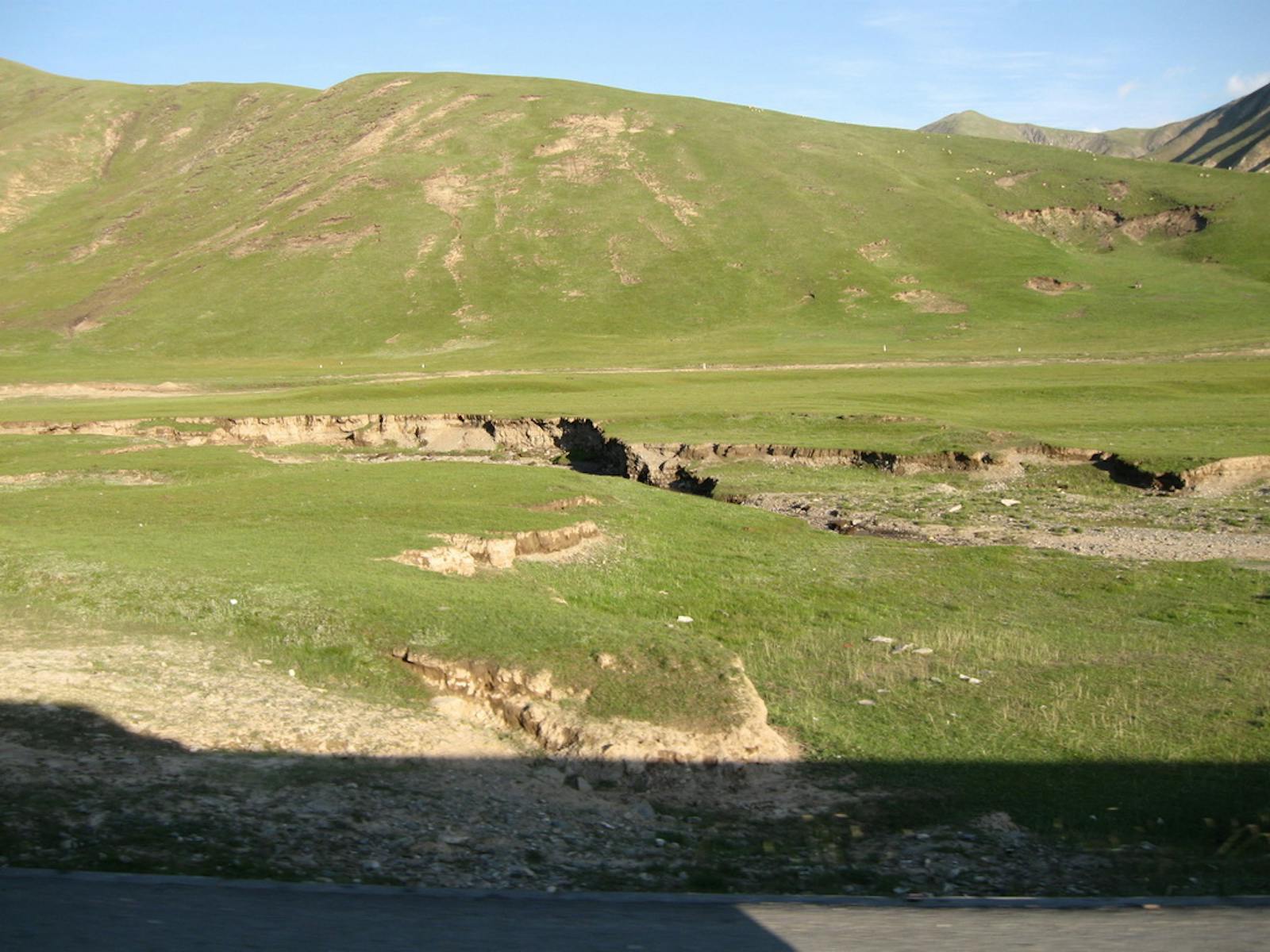Central Tibetan Plateau Alpine Steppe
The ecoregion’s land area is provided in units of 1,000 hectares. The conservation target is the Global Safety Net (GSN1) area for the given ecoregion. The protection level indicates the percentage of the GSN goal that is currently protected on a scale of 0-10. N/A means data is not available at this time.
Bioregion: Greater Tibetan Plateau Alpine Meadows & Shrublands (PA40)
Realm: Eastern Eurasia
Ecoregion Size (1000 ha):
63,087
Ecoregion ID:
750
Conservation Target:
80%
Protection Level:
5
States: China, India
The vast Tibetan Plateau supports a range of alpine habitats that become less productive to the north and west as elevations increase and precipitation declines. Between the monsoon-affected southeast and the frigid, desiccated northwest, lies the Central Tibetan Plateau Alpine Steppe ecoregion, hundreds of thousands of square kilometers of steppe meadow, where individual small plants are typically separated by bare earth.
Despite their high elevations from 3,500 to nearly 6,000 m, landscapes of the Central Tibet alpine steppe are predominantly flat because they are ‘endorheic’, which is to say that mountain stream water fails to escape the plateau, pooling instead into enclosed basins where it evaporates into the thin air, leaving salts and eroded sediments behind to fill the basins and flatten the topography.

The flagship species of the Central Tibetan Plateau Alpine Steppe ecoregion is the Przewalski's gazelle. Image credit: Creative Commons
Because the environment is too barren and cold to support humans and their livestock, the Central Tibet Plateau Alpine Steppe has some of the least disturbed ecosystems in temperate Eurasia, with roaming herds of wild ungulates and their predators. Feather grasses, sedges, drought tolerant alpine forbs, and cushion plants make up most of the vegetation of this ecoregion and large areas are underlain by permafrost.
Across the Central Tibetan Plateau alpine steppe ecoregion, annual precipitation declines to the northwest from about 400 to 200 mm, and dominant plant communities shift from ‘golf course-like pastures’ dominated by Kobresia sedge to gravelly steppes of Stipa grass and Carex sedge with plant cover less than 20%.
The species of Stipa commonly called purple feather grass is the most abundant plant across this ecoregion. Cushion plants and other compacted, woolly alpine forbs grow in places where soils are stable and snowdrifts accumulate during winter. These plants have evolved distinctive morphologies to cope with short growing season, persistent wind, and desiccating, DNA-thrashing solar radiation. Leontopodium, Saussurea, Arenaria, and Thylacospermum are taxa that represent these high alpine specialists.
Changtang National Nature Reserve (334,000 km2) supports Tibetan antelope, also called chiru, which migrate vast distances across the plateau. Argali, the largest wild sheep, are rare but widespread in mountainous terrain; blue sheep are locally abundant in similar habitat. Tibetan wild ass, also called kiang, remains abundant, although populations declined substantially in the 20th century. Tibetan gazelle is widely distributed. Wild yak, once common, is now extirpated from all but the remotest places.
The endangered Przewalski's gazelle, one widespread in this ecoregion, has suffered a drastic population decline that culminated in the late 20th century when species numbers fell to only about 1% of the ancestral total. Today, Przewalski's gazelle has begun to recover from this bottleneck, but is confined to a handful of sites in the vicinity of Qinghai Lake at the eastern end of the ecoregion. Niao Dao Nature Reserve (533 km2), at Qinghai Lake, provides breeding habitat for bar-headed goose, gull species, and colonies of great cormorant. A few black-necked crane also breed in this ecoregion.
Large carnivores—snow leopard, brown bear, and gray wolf—are rare but widespread, and prey on all but the most formidable herbivores. They also take smaller prey such as woolly hare, Himalayan marmot, and plateau pika. Here, the pika has been represented both as a keystone species that offers a crucial, reliable food resource for foxes, weasels, and birds of prey, and as a pest for allegedly degrading rangeland habitat with its burrowing activity.
Chiru, the Tibetan antelope, is vulnerable to poaching for its valuable wool, but recently their populations have increased under improved management. Similar to neighboring ecoregions on the Tibetan plateau, the Tibetan Railroad might affect the antelope’s migratory behavior and concentrate humans and livestock in a corridor along the rail line. Domestic tourism, poised to increase, offers an opportunity for public education, but also needs urgent, careful regulation in order to become sustainable in this fragile habitat that is slow to recover from disturbance.
The priority conservation actions for the next decade are to continue to discourage poaching of chiru and other mammal species; monitor and address impacts of the Tibetan Railroad; monitor climate change in a temperature-sensitive environment; and manage tourism, especially along the railroad corridor.
Citations
Carpenter, C. 2000. Eastern Asia: Central China. https://www.worldwildlife.org/ecoregions/pa1002. Accessed November 2018.
Miller, D. And Schaller G. 1996. Rangelands of the Chang Tang Wildlife Reserve in Tibet. Rangelands 18(3): 91-96.
Schaller G.B. 1998. Wildlife of the Tibetan steppe. University of Chicago Press.




